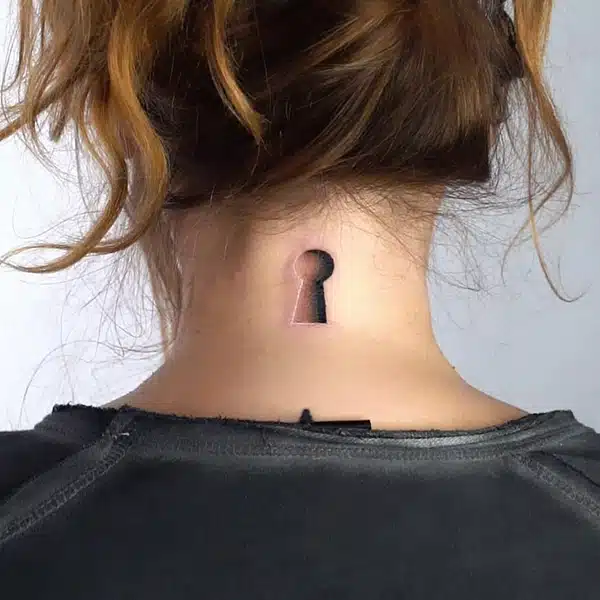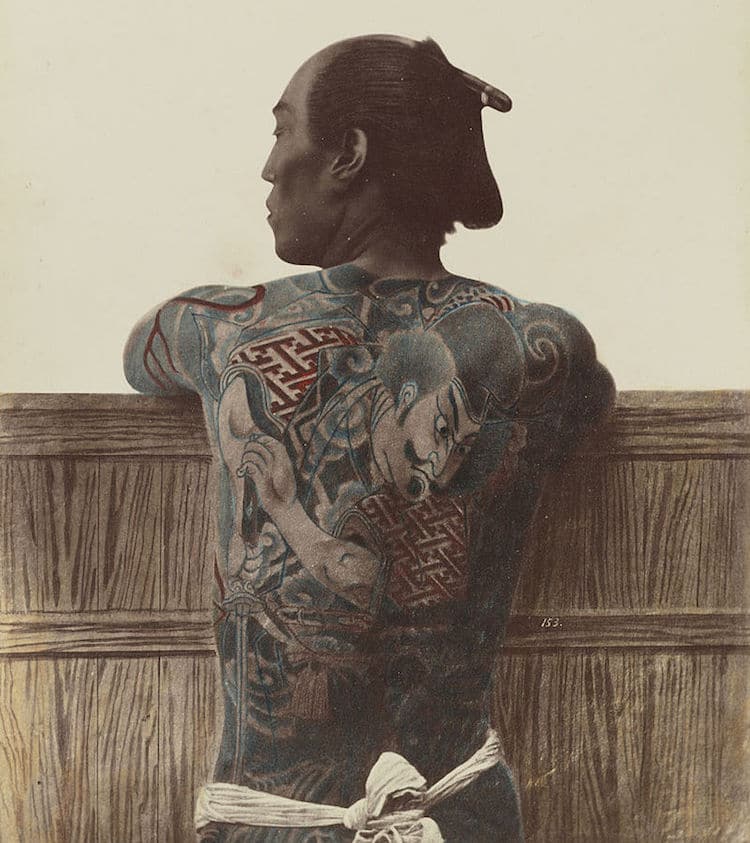
Photo: Wikimedia Commons (Public Domain)
Today, traditional Japanese motifs, designs, and stylistic sensibilities remain popular sources of inspiration behind many contemporary tattoos. Often, many ink artists opt to combine the old with the new to create pieces that range from playful prints and patterns to delicate works of art. Regardless of specific style, these Japanese-inspired tattoos have one thing in common: roots in Irezumi, or traditional Japanese tattooing.
To gain an understanding and appreciation for this ancient art form, one must first learn about its rich and colorful past—and the ways in which the Japanese tattoo has evolved over time.
History of Irezumi
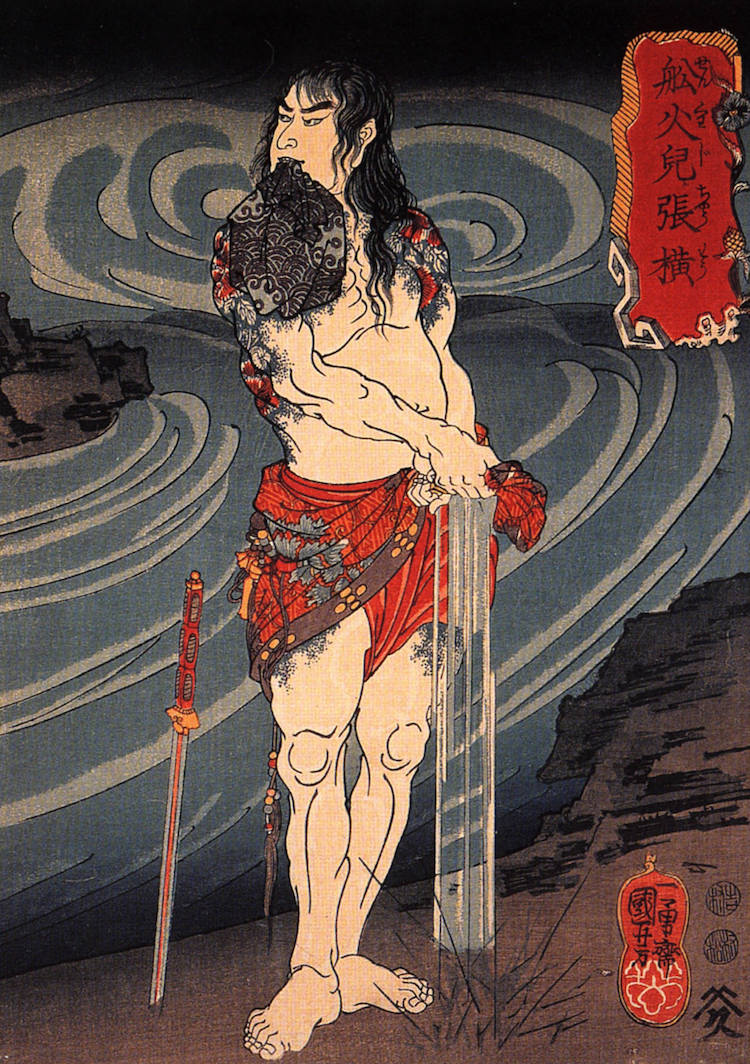
Photo: Wikimedia Commons (Public domain)
Like much of Japan's art, tattooing can be traced back centuries.
The earliest indication of the body art phenomenon can be found on the seemingly tattooed faces of clay figurines from 5000 BCE. Another ancient mention of these markings is evident in Wei Chih, a Chinese chronicle from the 3rd century. The telling text reveals that, at the time, “men young and old, all tattoo their faces and decorate their bodies with designs.”
In the 7th century, however, the art form took a turn. At this point, people began to view tattoos unfavorably. By 720 CE, they were even used as a form of branding and punishment for prisoners, courtesans, and criminals. This practice would last for over 1,000 years.
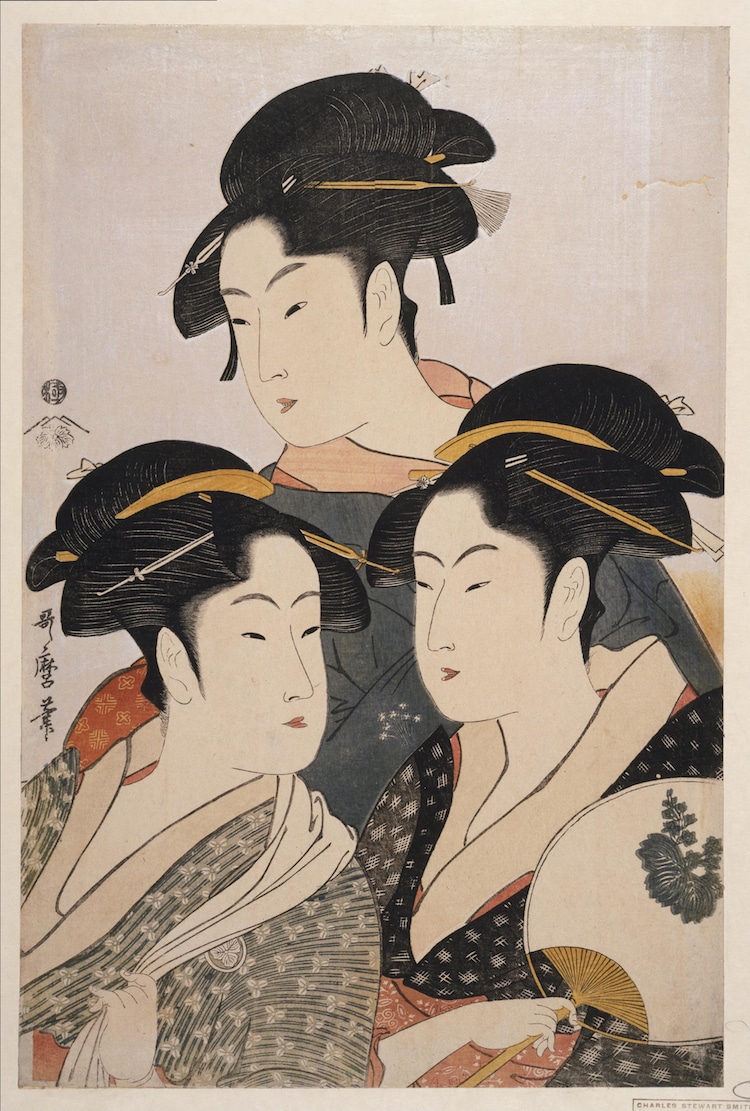
Kitagawa Utamaro, “Three Known Beauties,” 1793 (Photo: Wikimedia Commons, Public domain)
In the 18th century, Japanese tattoos underwent yet another transformation. Due to the prevalence of the colorful and pictorial Ukiyo-e woodblock print, tattoos rendered in this style became popular among groups of people with lower social statuses, like laborers, peasants, and even gangs. Given its ties to the lower class and its long and unsavory history, Irezumi was eventually outlawed in Japan—though artists based in the country could still legally tattoo foreigners.
This loophole proved particularly important in the 19th century, when artists began tattooing nonnative sailors. As a result of this, their work—and all of the cultural motifs, symbols, and styles that accompanied it—was eventually “exhibited” all over the world. Thus, though still an illegal form of art for residents of its home country, the Japanese tattoo gained unexpected global prominence.
Major Motifs
In terms of subject matter, Japanese tattoos often showcase the culture's reverence for nature—namely, animals and flowers. Additionally, much like the Ukiyo-e prints that have inspired Japanese tattoos, figures and portraits are also frequently featured in traditional tattoos.
Animals
View this post on Instagram
Many tattoos feature animals associated with strength, courage, and protection—like lions and tigers. Koi fish are historically popular subjects, too, as they represent luck, success, and good fortune.
Flowers
View this post on Instagram
Unsurprisingly, sakura (or cherry blossoms) remain the most popular floral motif found in Japanese tattoos. On top of its beautiful pale pink petals, this flower is preferred for its symbolic meaning, as these short-lived flowers often symbolize ephemerality. Lotus flowers, peonies, and Chrysanthemums are also favored for their alluring aesthetic and prevalence in Japan.
People
View this post on Instagram
Both realistic and mythological figures are often featured in Japanese tattoos. Portraits of people rooted in realism often include warriors and geishas, whose likenesses were favored for their expressive faces and bright colors, respectively. Additionally, other heroic figures, as well as characters from literature, often appear in Irezumi designs.
Figures from Mythology
View this post on Instagram
In addition to realistic people, folkloric figures are also popular tattoo choices. Prevalent mythological subjects include Tengu (ghosts), Oni (demons or troll-like creatures), and deities from both Buddhist and Shinto religions. Dragons are also traditionally found in Irezumi. Often featuring the head of a camel, the torso of a snake, fish scales, and bird talons, these creatures can symbolize a myriad of ideas.
Tattoos Today
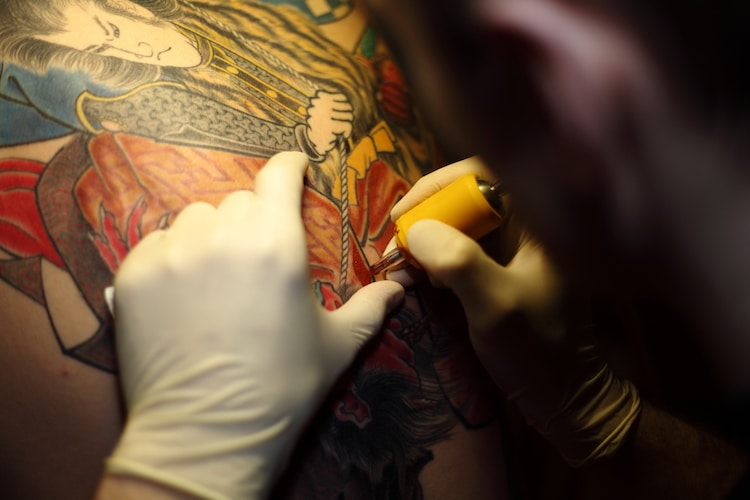
Stock Photos from Laskin Nikita/Shutterstock
Today, Japanese and non-Japanese tattoo artists alike often look to traditional Irezumi for inspiration. Though the practice has been legal in Japan since 1948, it is still somewhat taboo. Thus, finding a tattoo shop in the country can sometimes be challenging. Additionally, inked individuals are often prohibited from entering some public places, like bathhouses, hot springs, and gyms (though some of these spaces allow entry if the tattoos are concealed).
Nevertheless, tattoos have proven popular among Japan's younger generations. While many embrace contemporary tools like electric needles, some wish to preserve ancient approaches, like Tebori, or hand-tattooing. These pieces are created using a rod made of either metal or wood, and can take considerably longer to render than those made with more modern techniques. To many tattoo enthusiasts and artists, however, preserving the ancient craft is well worth the extra effort.
Japanese Tattoo Artists Today
Eiji Fujisawa at Studio Muscat
View this post on Instagram
Eiji Fujisawa can be found tattooing at Studio Muscat in the heart of Tokyo—Shibuya. Eiji is one of the most pronounced Tokyo tattoo artists working today and is known for his Japanese tattoos with a modern twist. His work shines when he adapts the traditional tattoo design into something modern and unique. Designs such as koi fish, traditional Japanese dragons, and hanya mask tattoos are some of his most captivating.
Tsuu at Rainfall Tattoo Studio
View this post on Instagram
Rainfall Tattoo Studio can be found in Nakameguro, Tokyo. It’s a place that celebrates the long-standing tradition of Japanese tattoo styles. They are very much dedicated to preserving the older ways and aesthetics of tattoo art. As one of the owners of Rain Fall Tattoo, tattooist Tsuu incorporates traditional Japanese tattoo motifs such as dragons and koi fish, handling each design with grace, skill, and passion.
Mutsuo at Tokyo Three Tides
View this post on Instagram
Tokyo Three Tides is a modern legend in Japan’s capital. Their artist Mutsuo is doing so much for the world of Japanese tattoos. He is a modern artist that keeps the flame of traditional Japanese tattoo burning. His work shines light on the ancient Japanese arts and designs many love and cherish, and he tattoos them with true craftsmanship.
This article has been edited and updated.
Related Articles:
Japanese Woodblock Prints Reimagined as Quirky Contemporary Tattoos
Tattooist Fuses Contemporary Freehand Techniques with Traditional Japanese Themes
Cats Are Tattooing Other Cats in Surreal Japanese Ink Wash Paintings













































































